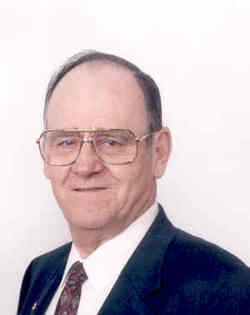

Albert Wind, Jr
January 26, 1925 — September 29, 2008
Albert Henry Wind, Jr., of Erlanger, died Monday, September 29 at St. Elizabeth South Hospital in Edgewood. He was retired from C & O Railroad as a Yard Conductor.
He was a member of Erlanger Methodist Church, the Colonel Clay F & AM Lodge 159 and the Kenton County Game and Fish Club. His hobbies included trap shooting, farming, hunting and fishing.
Mr. Wind was a United States Navy Veteran of World War II, serving as a Fire Control Man 2nd Class on the destroyer, USS Purdy DD734. The Purdy earned a battle star for her response when attacked by Japanese kamikaze pilots on April 12, 1945.
Survivors include his wife, Marilyn Frances Wachs Wind; sons, Albert H. Wind, III of Ft. Wright and Kevin W. Wind of Erlanger; three grandchildren, Albert IV, Amanda and Haylee; and two great grandchildren, Ashlynne and Addyson.
He was preceded in death by his parents, Albert H. Sr., and Henrietta Jahnke Wind.
Visitation, Wednesday, October 1, 2008 from 1:00 pm to 3:00 pm at Forest Lawn Memorial Park Chapel, Erlanger. Funeral Service at 3:00 pm at the Chapel. Reverend John Street officiating.
Memorials are suggested to Susan G. Komen Breast Cancer Foundation, Greater Cincinnati Affiliate, 2880 Boudinot Avenue, Cincinnati OH 45238.
Taken from The Combat Report, "One Day in War: USS Purdy (DD 734)" written by Scot H. Laney:
On 12 April 1945 (the day that Franklin Delano Roosevelt died) USS Purdy (DD 734) and USS Cassin Young (DD 793) ran radar picket off Okinawa in support of the over-all effort to push the Japanese out of that bastion and ever closer to the home islands. The Purdy, a 2200-ton Allen M. Sumner class destroyer, was no distant cousin to the peril of duty in that kamikaze infested area and her crew knew well the hazard associated with the vulnerable radar picket station. No one had to remind them that death came screaming on the wings of the Japanese pilots that held so little value for human life, their own or those of the US Navy men that patrolled against their vile threat and, with increasing success, shot them from the sky.
The thirty plane Japanese attack formation came out of the sun to attack Purdy and her sister picket, USS Cassin Young (DD 793). Closing distance, the planes split up into several smaller groups to divide the anti-aircraft fire as well as to attack other light units of the fleet operating in the general area. Purdy and Cassin Young held their positions; supported by four Carrier based Marine fighter planes. In a hail of defensive fire Japanese planes began to splash around the ships. But Cassin Young was eventually hit and had to withdraw from the fight, leaving Purdy and three of the Marine fighters to duke it out with the Japanese. The fourth Marine fighter had been accidentally downed in the early going by AA fire, perhaps from the Purdy. The fight raged for ninety minutes and Purdy and the Marines were throwing back the threat killing six (ship) and twenty (air patrol) for a total of twenty-six Japanese planes. Purdy had used all of her contact shells and had resorted to 5" AP cannon fire by the time one lone Betty was all that was left of the attackers. Skimming low on the water and approaching from starboard, the Betty was intent on smashing the Purdy. Equally intent on not letting that happen, the gun crews on Purdy let rip with everything they had and splashed the Betty short of her goal. From his position on the flying bridge Kole watched the Betty get shredded. In horror he also watched as the Betty skipped over the water like a stone and impacted the hull of Purdy about five feet above the waterline. One armor-piercing 500-pound bomb dislodged from the bomber on impact and cored the hull, passing through the interior of the ship, and blowing an exit hole out the port side. The impact threw Kole off the bridge where he landed on a ledge suffering from two punctured eardrums.
The explosion wiped out the Interior Communications (IC) compartment, the WWII equivalent of the modern era Combat Control room. Gone was all internal ships communication, as well as any hope for radar tracking of additional threats in the area.
Worse than that the bomb had killed fifteen of the Purdy crew, and injured another twenty-five more.
Left to recover some sense of immediate order were the surviving members of the crew and officers on the deck, who began to organize them into casualty and damage control parties under the orders of Purdy's CDR Frank Johnson. CDR Johnson was known to the men as "General Quarters" Johnson for his constant drilling of the crew, a fact that now in all probability saved lives in the confusion.
The creeping slow crawl the ship made to the safety of Kerama Retto, licking her wounds and mourning her dead, was a certain kind of horror for all aboard her that day.
The Purdy was afforded emergency repairs and later joined a convoy of damaged ships bound for San Francisco. Eventually fully repaired she went on to serve in Korea, in various roles in the Cold War including the Cuban blockade, and as a part of the recovery fleet for Project Mercury.
Purdy earned a battle star for the action on 12 April, and was awarded three more during the Korean conflict. She was stricken from the register 1 July 1973.



